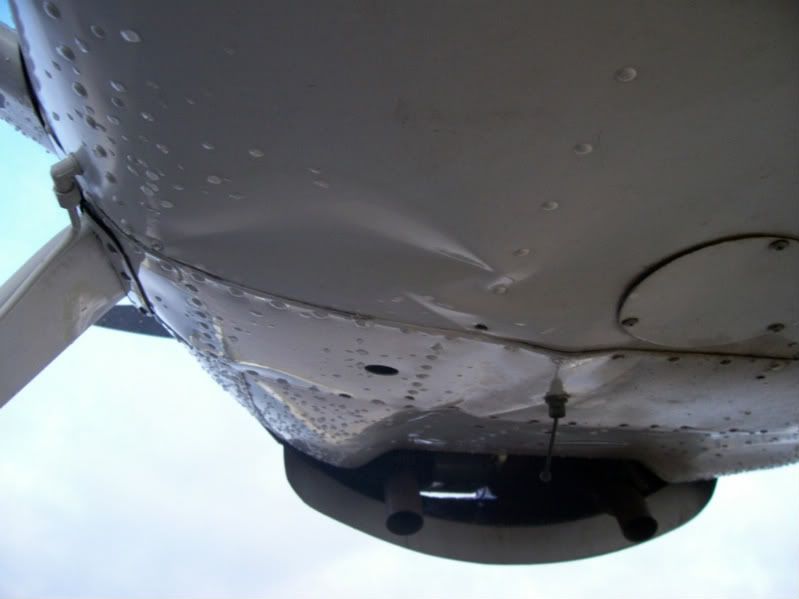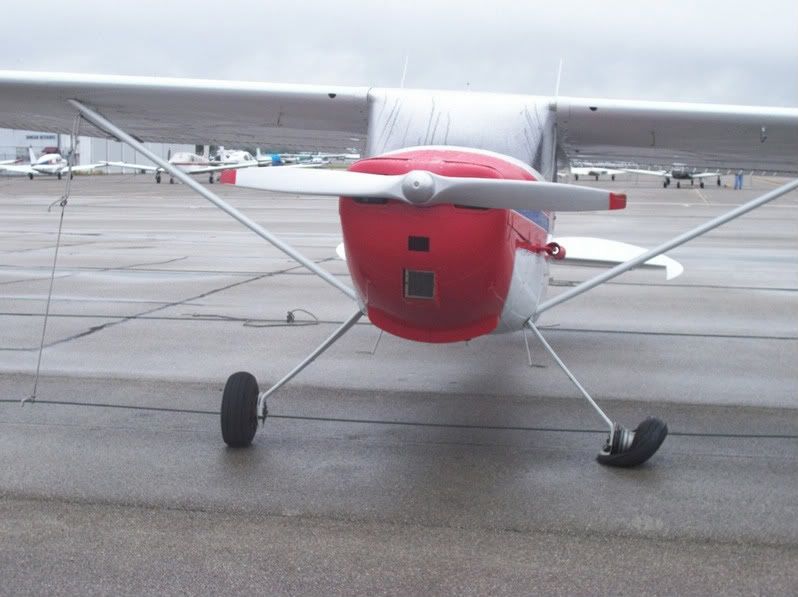voorheesh wrote:...My understanding of the parking brake operation is that the toe brake must be actuated and the cable must be pulled which allows a device to catch the shaft of the brake through a serration which will then hold pressure on the brake(s)until the device is released by pushing the cable back in. I am told that the parking brake can not be engaged unless the toe brake is actuated. My IA has advised me that my parking brake is adjusted properly,....
Voorheesh, please do not feel "attacked" in this thread. What you may have percieved as argumentiveness is actually an eagerness to assist by those who are well-convinced of the correctness of the action.
Having re-read your original post (in an effort to understand how this thread was perceived as argumentative) I realized I'd never addressed one of your earliest points... your understanding of the problem.
Your statement above is how the parking brake SHOULD function. Unfortunately it also has an UN-intended method of operation as well as the intended one.
The parking brakes operate by a mechanism consisting of a small locking-lever located at the operating shaft of the respective brake master cylinder. A Bowden cable, with it's operating knob on the panel, operates a yoke-cable, which lifts both levers (one on each master cylinder) locking or "jamming" the already-depressed brake into the applied position. Early model master cylinders utilized notched operating rods, later models utilized smooth rods, but all models use similar locking levers and operating cables. When deliberately "set", the locking-lever is "cocked" against the operating rod, and cannot be released until the pilot again applies brake-pedal pressure (and more forcefully than when setting the brakes) to allow the locking-lever to fall back to a relaxed position. The parking brake Bowden cable (and it's operating yoke-cable) are then pushed by the pilot back into the UN-applied position. The brakes are no longer applied except by the pilot's feet. That's how it normally works.
In the failure mode, the pilot applies full rudder rather forcefully (such as in an enthusiastic application of rudder in-flight during a gusty crosswind. (It could also happen during an aggressive turn on the ground, using a bit of brake to assist, but that is not likely to cause a landing problem, even tho' it might cause a taxying accident or might interfere with a turning takeoff.)
In any case, if the rudder pedal is enthusiastically applied in-flight, regardless of the pilot's care in not applying brake pressure, if the rudder pedal is moved fully forward it can contact the firewall blanket which will in turn lift the locking lever. IF that lever remains engaged then that brake will become locked into whatever application it has seen during the event. Despite even a talented pilot's best intentions to keep his feet on the floor and stay off the brakes, inadvertent brake pressures are commonly applied in vigorous rudder applications.
If that brake is applied and that locking lever is lifted by contact with any other object (such as a firewall blanket), the pilot will likely be unable to detect it and unlock it before touchdown.
Even if your firewall blanket is tidy and well forward of normal pedal movement, an excited application of rudder in-flight will move your pedals forward of their normal travel. The 170 (and many others) do not have a blocking "stop" at the pedal or firewall. Their only stop is at the rudder bellcrank, and plenty of stretchy-cable, loose and worn pulleys, and general slop (even in a well-maintained system) is available which can allow that rudder sufficient travel to lock the brake prior to touchdown.
(Even some of the much later "umbrella handle" operating systems utilize the same, defectively-designed locking levers, and they are also subject to this type of unrequested operation. The only type parking brake systems that has not suffered this sort of failure are those that actually capture hydraulic pressure in the brake system via some method other than locking pilot-depressed-pedals in the down position, i.e., they capture the hydraulic fluid applied pressure via a blocking valve and the pedals subsequently relax, or via an operating system which pulls the brake pedals into the applied position with no other action by the pilot upon the pedals. The hydraulic locking-valve method is commonly used in Beech and many multi-engined aircraft. Some later Cessnas use an umbrella-pull-handle which operates to pull the brake-pedals into the applied position without any other input from the pilot. These systems do not suffer from this failure mode.)
This discussion is intended to be helpful in understanding the problem with the type of parking brake systems in many Cessnas.
I hope it is appreciated that only the COMPLETE removal of the locking levers from the master cylinders will alleviate the problem. Merely disconnecting the Bowden cable, or disconnecting the yoke-cable will NOT prevent locking levers from locking the brakes. I also hope this helps everyone remember that our words can be received differently than intended. (I'm one of the worst.)


